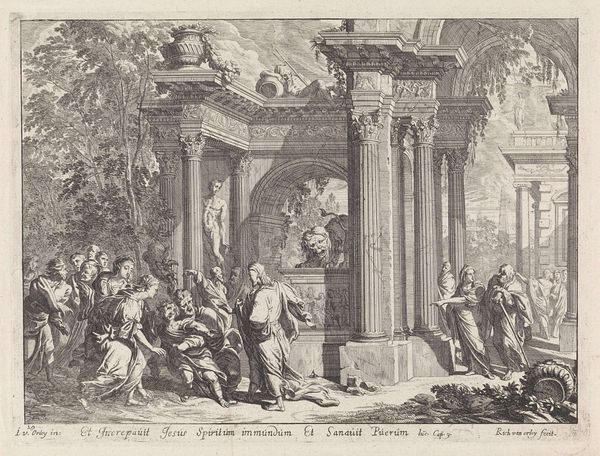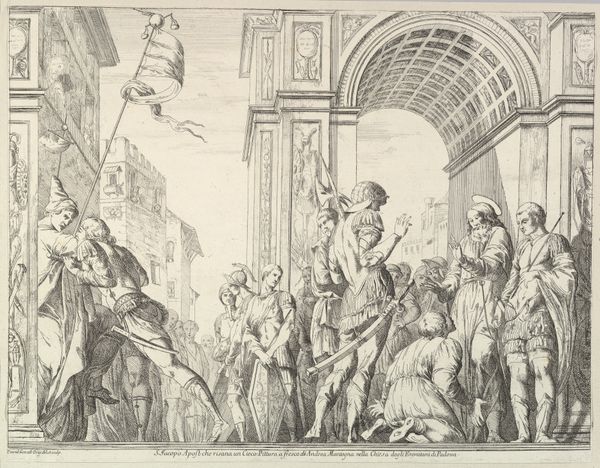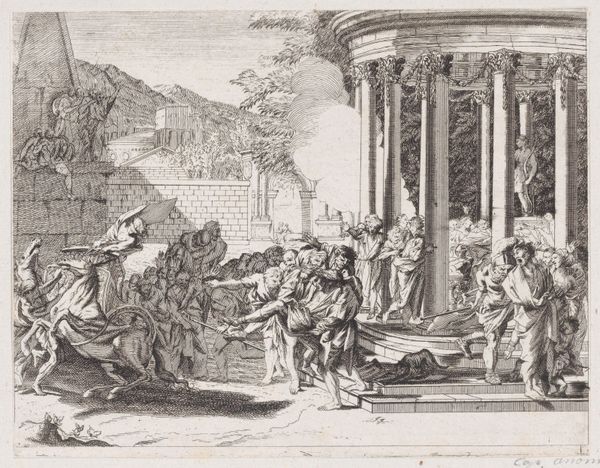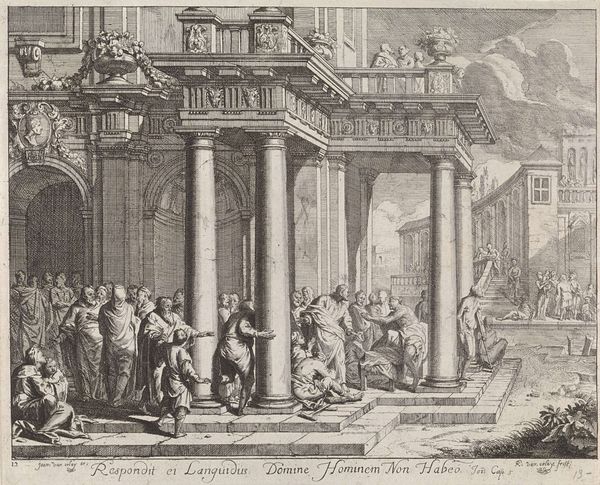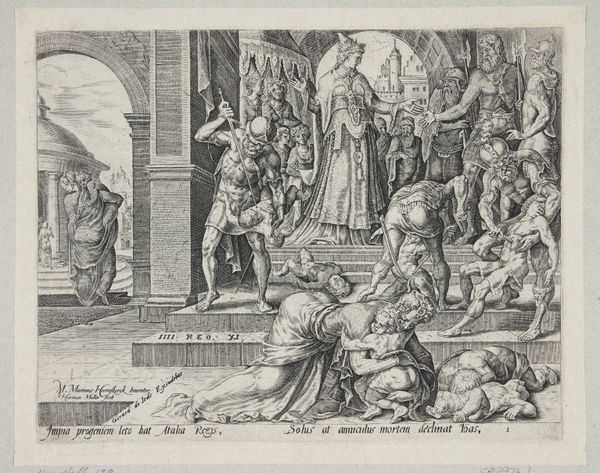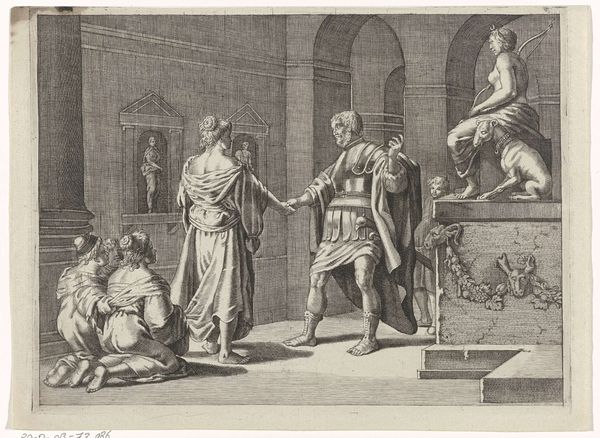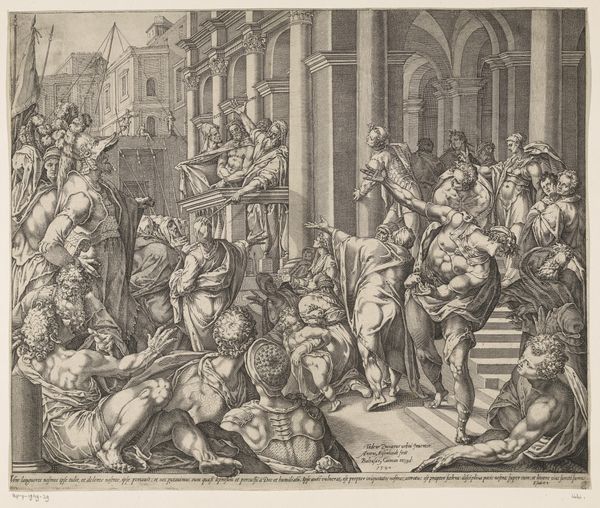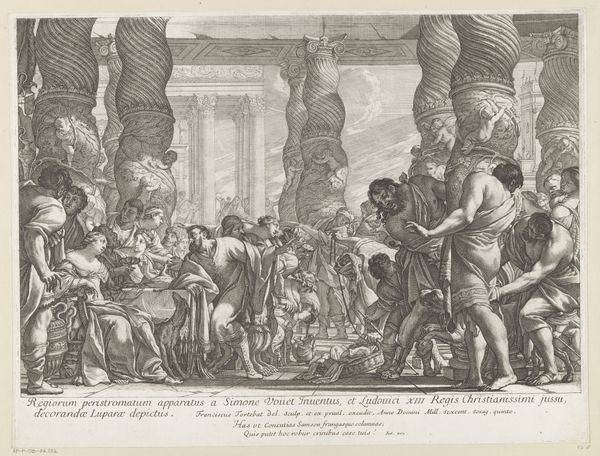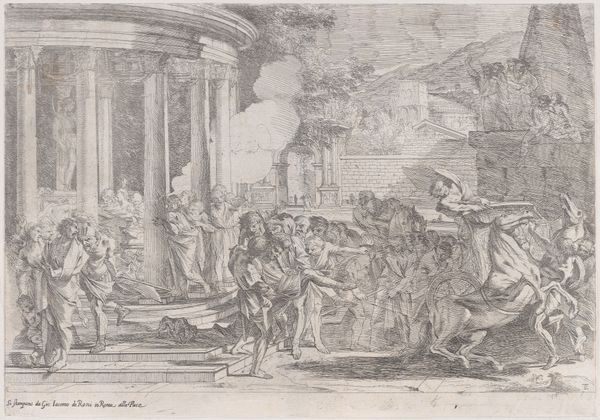
print, engraving
#
narrative-art
#
baroque
# print
#
landscape
#
figuration
#
line
#
history-painting
#
engraving
Dimensions: height 200 mm, width 257 mm
Copyright: Rijks Museum: Open Domain
This print, "Christ Healing the Daughter of the Canaanite Woman," was made in the late 17th or early 18th century by Richard van Orley. It’s an etching, a process that relies on the corrosive action of acid to create lines in a metal plate, which is then inked and printed. The controlled bite of the acid allowed Orley to create a complex composition, with architectural details and figures rendered in fine detail. This printmaking technique was crucial in disseminating images, allowing for the mass production and distribution of visual information. Consider the labor involved: the skilled hand of the etcher, the production of paper, and the distribution networks that brought this image to a wide audience. Printmaking democratized art, making it accessible beyond the wealthy elite. This print exists as both a work of art and a product of early capitalist systems, blurring the lines between craft and industry.
Comments
No comments
Be the first to comment and join the conversation on the ultimate creative platform.
